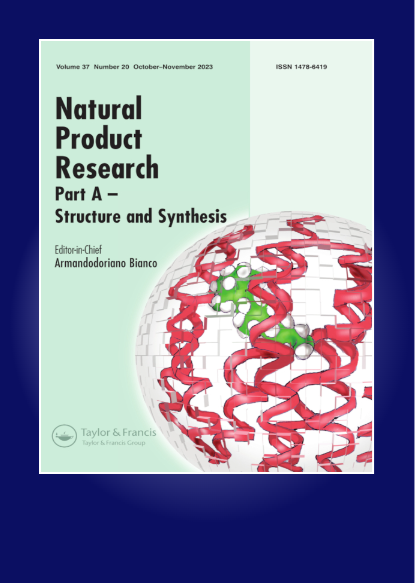Simultaneous quantification of hyoscyamine and scopolamine using HPLC-DAD in four Solanaceae: Hyoscyamus niger, Datura stramonium, Atropa belladonna and Mandragora officinarum
IF 1.9
3区 化学
Q3 CHEMISTRY, APPLIED
引用次数: 0
Abstract
Alkaloids are a group of secondary metabolites that generate great interest since ancient times. Numerous Solanaceae plants are rich sources of tropane alkaloids as hyoscyamine and scopolamine which are obtained mainly from Hyoscyamus niger, Datura stramonium, Atropa belladonna, Mandragora officinarum. In the present study it was developed an HPLC-DAD using an XBridge Phenyl column for the quantification of scopolamine and hyoscyamine, molecules used in pharmaceutical industry to treat stomach or intestinal disorders. A. belladonna presented hyoscyamine and scopolamine, the first one ranged from 1466 to 5117 mg/Kg DW while the second one ranged from 140 to 1743 mg/Kg DW. In D. stramonium, hyoscyamine was not found while scopolamine ranged from 430 to 8980 mg/Kg DW. On the contrary H. niger and M. officinarum did not contain any trace of these alkaloids. This is the first work in which different parts of four Solanaceae were analysed for their hyoscyamine and scopolamine content.
用HPLC-DAD同时定量四种茄科植物中的山莨菪碱和东莨菪碱:黑山莨菪碱、曼陀罗、颠茄和曼陀罗。
生物碱是一组次生代谢产物,自古以来就引起人们的极大兴趣。茄科植物中含有丰富的莨菪生物碱,主要来源于玄参、曼陀罗、颠茄、珙桐。在本研究中,使用XBridge Phenyl柱开发了一种HPLC-DAD,用于定量东莨菪碱和山莨菪碱,这些分子在制药工业中用于治疗胃部或肠道疾病。A.颠茄以山莨菪碱和东莨菪碱为主,第一次用药时间为1466~5117年 mg/Kg DW,而第二个范围为140至1743 mg/Kg DW。在D.stramonium中,没有发现舌草胺,而东莨菪碱的含量在430至8980之间 mg/Kg DW。与此相反,黑曲霉和铁皮石斛不含这些生物碱。这是首次对四种茄科植物的不同部位进行了山莨菪碱和东莨菪碱含量的分析。
本文章由计算机程序翻译,如有差异,请以英文原文为准。
求助全文
约1分钟内获得全文
求助全文
来源期刊

Natural Product Research
化学-医药化学
CiteScore
5.10
自引率
9.10%
发文量
605
审稿时长
2.1 months
期刊介绍:
The aim of Natural Product Research is to publish important contributions in the field of natural product chemistry. The journal covers all aspects of research in the chemistry and biochemistry of naturally occurring compounds.
The communications include coverage of work on natural substances of land and sea and of plants, microbes and animals. Discussions of structure elucidation, synthesis and experimental biosynthesis of natural products as well as developments of methods in these areas are welcomed in the journal. Finally, research papers in fields on the chemistry-biology boundary, eg. fermentation chemistry, plant tissue culture investigations etc., are accepted into the journal.
Natural Product Research issues will be subtitled either ""Part A - Synthesis and Structure"" or ""Part B - Bioactive Natural Products"". for details on this , see the forthcoming articles section.
All manuscript submissions are subject to initial appraisal by the Editor, and, if found suitable for further consideration, to peer review by independent, anonymous expert referees. All peer review is single blind and submission is online via ScholarOne Manuscripts.
 求助内容:
求助内容: 应助结果提醒方式:
应助结果提醒方式:


